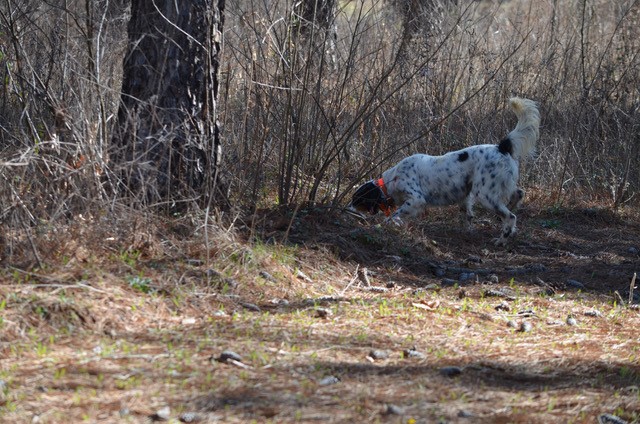
by Terry Wieland
’Tis a sad fact, but these days very few of us grow up with fathers who shoot, who buy us our first shotguns, teach us the ways of the wiley grouse, and introduce us to the courtesies of dealing with bird dogs.
I was hunting deer at Westervelt in Alabama this year when it occurred to me that there might be a market for a short course on how to hunt live game with a shotgun. There is no shortage of tuition available on shooting skeet and other clay birds, but your first time out with a dog, pursuing live game with minds of their own, can be pretty unnerving.
As it turned out, Steven Carroll, Westervelt’s manager, had had the same idea, but had yet to put it into practice, what with Covid, travel restrictions, and limited numbers of birds available. We conspired to put together a trial run in early March, the pause for breath between deer and turkey season.
Westervelt, the company, is in the timber business, and their lodge near Aliceville is primarily a forestry tract that includes wildlife management and hunting as adjuncts to the main business. They’ve run courses on turkey hunting for years, so adding one on wingshooting was a natural.

What we had in mind was not a course on shooting a shotgun. It’s intended for people who already know how to handle a gun, but have never shot live game before. As well, they need to learn how to deal with pointing dogs — not to run the dogs themselves, another art in itself — but what to do when a dog goes on point, when it moves around, when there is more than one gun, and so on. To say nothing of the explosion of a covey of quail at your feet.
To experienced wingshooters, all of this is second nature, but you’d be surprised how many “experienced” wingshooters don’t have the first faint clue about etiquette with other hunters (“Is that your bird or mine?”) or with dogs who are doing their best in a difficult situation with strangers.
Westervelt goes out of its way to keep its birds as wild as possible, unaccustomed to human contact and ready to fly at the first sign of trouble. When we arrived, however, they were out of chukars entirely and down to a precious few with pheasants; they did, however, have enough bobwhite quail for our purposes.
The designated victim — er, student — was my friend Burt, who’s a good shot on clays but had never killed anything with feathers. We threw in the new editor of Gray’s, Mike Floyd, to be the second gun in the “who’s bird is it?” section of the course.
As with most trial runs, things did not go completely according to plan. One problem was to stop laughing long enough to accomplish something. (We were not the most serious crowd, but before you start to write an indignant letter, none of the clowning involved shotguns.) It was mostly stuff like Jeff’s English setter, Rowdy, being distracted by the drone we were flying to get aerial shots. He seemed to want one of us to shoot it down.
Then there were the pheasants who, having been around, wanted no part of the whole thing.
Even so, we accomplished a lot in one day. For his part, our designated hitter, Burt, knocked down 13 birds with 15 shots with his venerable W.J. Jeffery double, and Rowdy was rewarded for his work with a chance to roll in something truly obnoxious.
As of now, adding a wingshooting course is on the schedule for Westervelt, Covid and bird supply willing. You can find them at www.westerveltlodge.com.
______________________________________________________________________________
Terry Wieland has been Shooting Editor of Gray’s since 1993 and is the author of a dozen books on hunting, shooting, and history. His latest is Great Hunting Rifles — Victorian to the Present, published by Skyhorse in 1997. Last year, Skyhorse reprinted his acclaimed 1999 book on Robert Ruark, A View From A Tall Hill.
